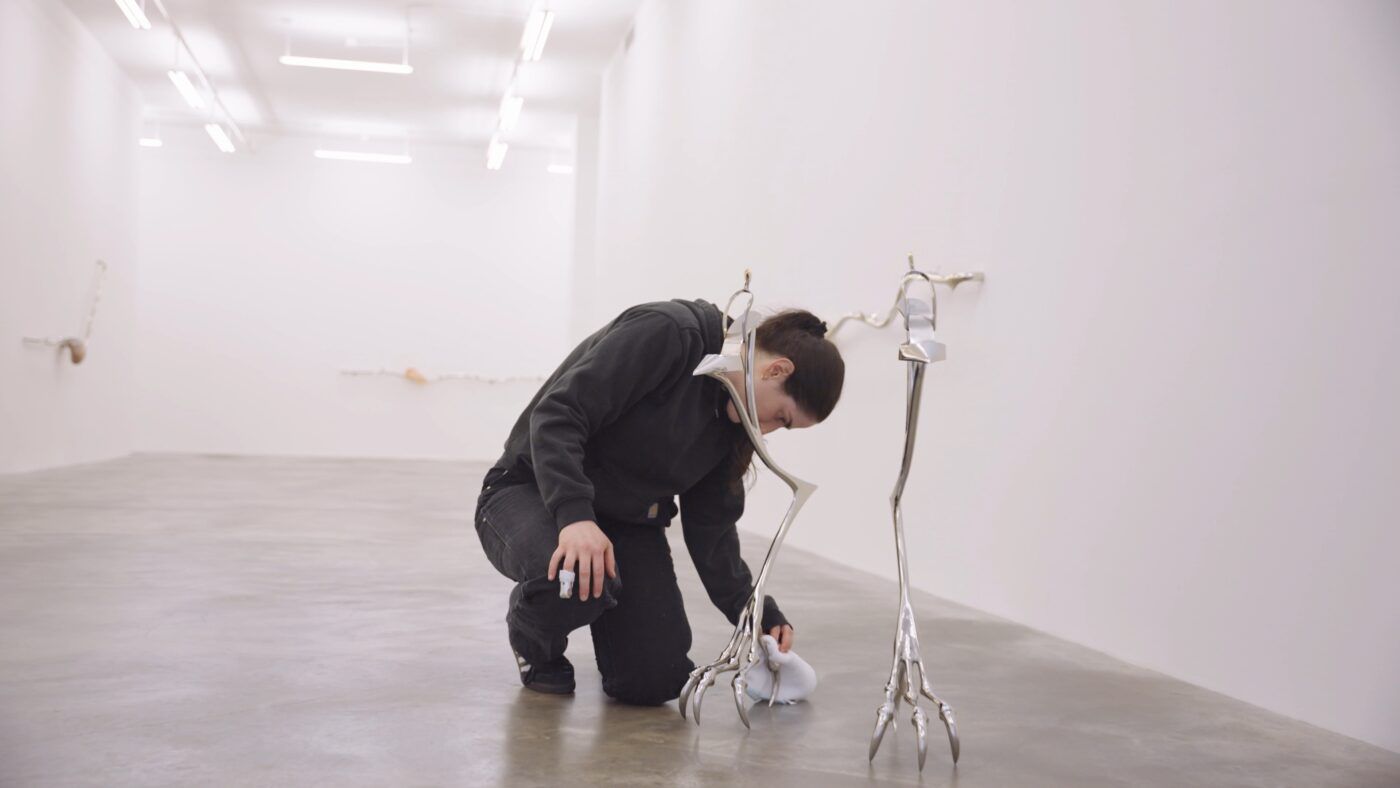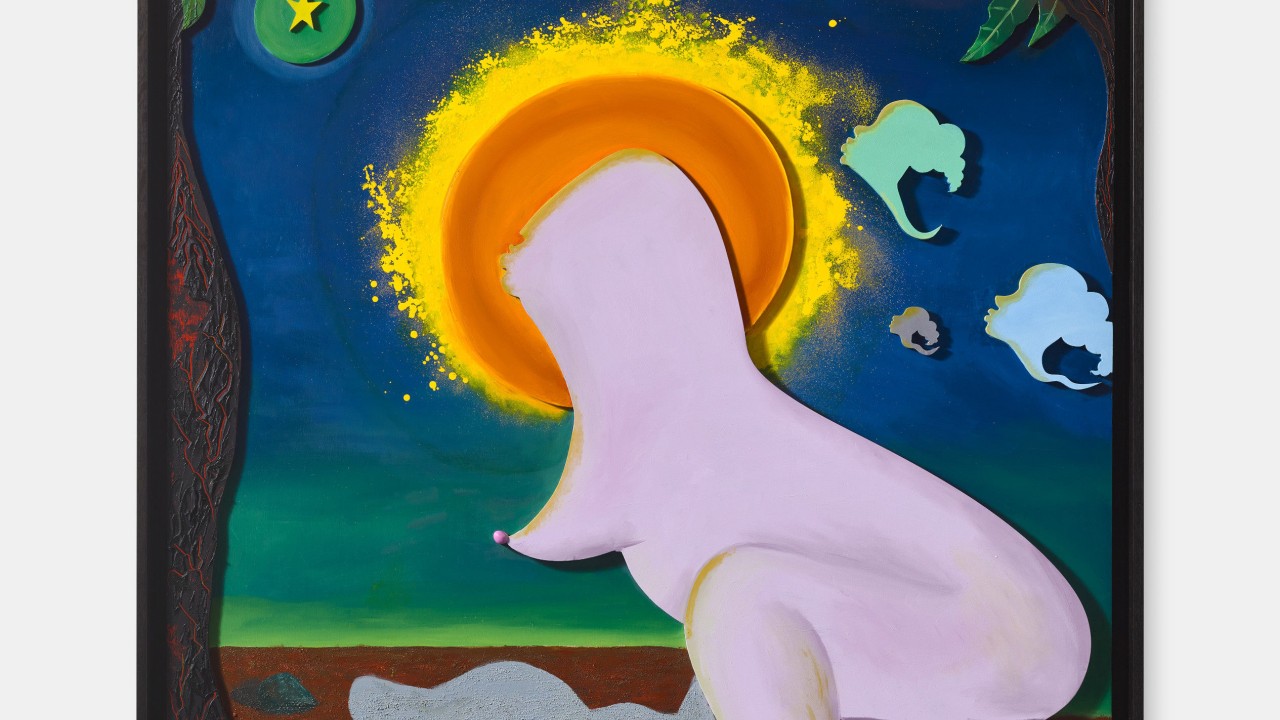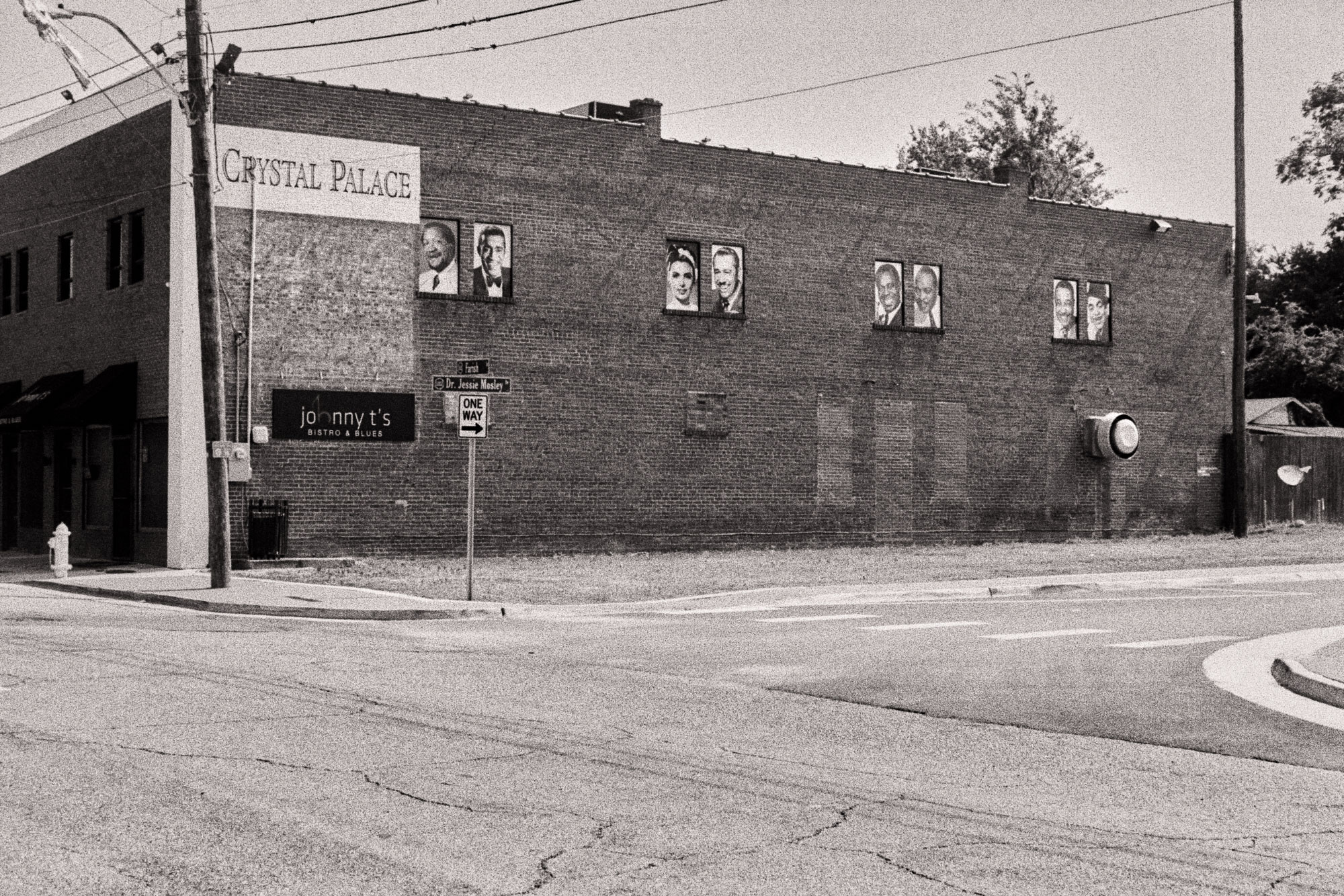Aguas calientes
2019 - Sculpture (Sculpture)
21 x 25 x 23 cm, 35 x 25 x 27 cm, 28 x 54.5 x 46 cm
Gabriel Chaile
For the project Aguas calientes Gabriel Chaile exchanged silverware from three popular soup kitchens (mutual aid organizations to provide food for people in need) in Buenos Aires to brand new cooking utensils to shape his project. Chaile then reworks the used goods, welding and engraving the names of their sites of provenance and imagery from local indigenous community’s visual repertoire; faces from vessels and iconography present in Cultura Tafí, Condorhuasi, Alamito, Santa María, Candelaria, and Ciénaga. Through this operation, he translates the idea of the “communal pot” into a meeting point for mutual cooperation and political resistance. In this project, Chaile reveals how everyday objects are imbibed in social and political relations, and their use and context mark their surfaces. The pans and pots used in the project are from the late 90s, having fed hordes of people during Argentina’s most challenging economic crisis. By devising new uses for items that once had a clear purpose, Chaile reprograms its fate and somehow retrieves, through those specifically used utensils, magical properties of pre-Columbian vessels. Simultaneously, the artist calls into question an entire system of power relations established by the “official” narratives and its classist progression, against which the pot and its form stand. The project was first shown in 2019’s edition of Art Basel, where the artist was present offering cups of mate cocido infusion (a popular Argentinian drink) every day at 5pm, in a subtle irony to English tea-time.
Gabriel Chaile’s work draws on references ranging from Pre-Columbian cultures to Conceptualism in often-usable sculptures involving bricks, adobe structures, and other found objects. He employs a critical-poetical approach to the sacred and its rituals, the political and indigenous communities of South America and his often-humorous works are invariably underscored by rather pointed social engagement. Chaile’s anthropological and visual research revolves around two key concepts: “the engineering of need,” consisting of creating objects and structures that collaborate in improving the conditions and raising awareness to extreme scenarios; and the “genealogy of shape,” which approaches the history of forms that have survived time and denote resistance, such as the clay oven and the common pot. Calling attention to class disparities and genealogy, Chaile invokes his indigenous roots to claim the reconstruction of pre-colonial identity and continue the lineage of these cultures through his own interpretation, propelling an inventive reparation journey.
Colors:
Related works sharing similar palette

© » KADIST
James "Yaya" Hough
2016This untitled ink and pencil drawing by James “Yaya” Hough is made on what the artist calls “institutional paper”, or the state-issued forms that monitor the daily activities of prisoners, of which, each detainee is generally required to fill out in triplicate...

© » KADIST
Dora Garcia
2008Dora Garcia’s work is a result of institutional critique and more generally that of language, following the conceptual artists of the 1960s like Weiner and Kosuth and Fraser from the 1980s and 1990s...

© » KADIST
Charles Avery
2012Since 2005, Charles Avery has devoted his practice to the perpetual description of a fictional island...

© » KADIST
Roman Ondak
2003As the caption purposely admits, these drawings were made by friends of Ondák’s at home in Slovakia asked to interpret places he has journeyed to...

© » ART21
Press Release: Art21 to Release New Film: “Hannah Levy’s Adaptive Structures” | Art21 Our Series Art in the Twenty-First Century Extended Play New York Close Up Artist to Artist William Kentridge: Anything Is Possible Specials Art21.live An always-on video channel featuring programming hand selected by Art21 Playlists Curated by Art21 staff, with guest contributions from artists, educators, and more Art21 Library Explore over 700 videos from Art21's television and digital series Latest Video 15:03 Add to watchlist Politics of Listening Lawrence Abu Hamdan Extended Play February 7, 2024 Search Searching Art21… Welcome to your watchlist Look for the plus icon next to videos throughout the site to add them here...

© » KADIST
Zach Reini
2015Particularly shaped by his own youth in the 1990s, his recent works have incorporated things like a marijuana leaf, a dragon-emblazoned chain wallet, metal grommets, and the ubiquitous (in the 90s) Stussy symbol...

© » KADIST
Maria Fernanda Plata
2015Unraveling, or “unweaving” sections of fabric, Maria Fernanda Plata arrived at delicate and tenuous-looking forms, both ghostly and gentle...

© » KADIST
Luciano Figueiredo
2015Figueiredo’s succinct forms are rendered in bright hues of yellow, red, green, and blue, with white and black defining positive and negative spaces within the overall geometry...

© » KADIST
Aaron Young
2007The artist describes the work as “very performative video-pieces but they take on a more sculptural feel...

© » KADIST
Alain Séchas
2006Coué 1 is an animated sculpture that hypnotically highlights the self-motivating leitmotiv of the ‘Coué Method’: “Every day, in every way, I’m getting better and better.”This is the mantra that is repeated by different male and female voices in the soundtrack – first in an incomprehensible painfully slow slur, becoming clear and speeding up into a drilling hilarious sounding high pitching spin, as if helium had been inhaled...

© » SOUTH CHINA MORNING POST
African-American artist and activist Alexandria Smith brings her 3D paintings to Asia with exhibition at Gagosian Gallery in Hong Kong | South China Morning Post Advertisement Advertisement Art + FOLLOW Get more with my NEWS A personalised news feed of stories that matter to you Learn more Alexandria Smith’s “Seers Like Me” (2023) is one of 15 pieces that comprise her first Asian solo exhibition at Hong Kong’s Gagosian Gallery...

© » KADIST
Lim Sokchanlina
2018The photographic series Wrapped Future II by Lim Sokchanlina brings fences used on construction sites to enclose the surrounding areas, to different locations, lakes, valleys and forests; and places them at the center of works to obscure the beautiful Cambodian landscape...








